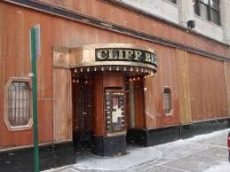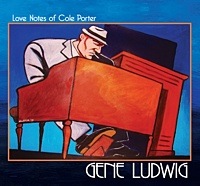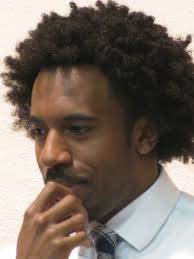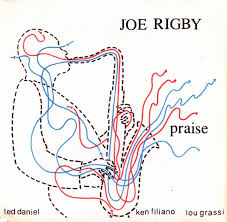
The Jazz Voyager
The Jazz Voyager is leaving on a jet plane and heading to the Motor City this week to hang out at the swanky, restored art deco club known to the locals as Cliff Bell’s. The jazz club opened its doors in 1935 and has hosted some of the biggest names in the industry all while serving up nightly a creative, eclectic fare with live jazz on stage. Two shows nightly and of course, this voyager will be at the 9:30pm seating which accommodates between 100 and 150 patrons.
On the marquee is Detroit native, vocalist Kimmie Horne, who comes from the legendary family that gave rise to singing stars before her, Lena and Cleveland. She hosts her self-titled jazz festival annually, tours internationally and is gracious enough to spend a few gigs in her home city to perform for her fans.
Cliff Bell’s is located at 2030 Park Avenue, Detroit, Michigan 48226. For more information visit https://cliffbells.com.
More Posts: adventure,club,genius,jazz,music,preserving,saxophone,travel,vocal

Daily Dose Of Jazz…
Samuel Quinto Feitosa was born Samuel Quinto Feitosa on September 5, 1973 in Belém, Pará, but grew up in Salvador, Bahia. From the age of seven, he developed his interest in piano from the gospel music performed in the Baptist Church during his childhood. An autodidact, he played at home without teachers, learning harmony, reading and writing music and orchestration, musical composition, arranging for the church choir, and started playing as a pianist at age 12.
Releasing his debut CD Latin Jazz Thrill in 2007 in Portugal, with his trio, Samuel followed it with Salsa ‘n Jazz, containing eight original compositions and a standard the following year. After a European tour he established the first course of Latin Jazz at Jazz School North, Porto. He also became the artistic director of one of the most traditional jazz Portuguese clubs, B-flat.
He returned to Brazil in 2012 to take the position of Music Minister at the Second Baptist Church in Mossoro, Rio Grande do Norte. During this period he wrote symphonies, opera, minuets and christmas rratorio for choir.
In 2015 he becames the newest piano representative of Fritz Dobbert pianos and returned to jazz performance. He published his first book called Improvisar é muito fácil in 2016. Quinto is a member of several organizations including the International Council for Traditional Music, the American Council of Piano Performers, the National Federation of Music Clubs and has a collaborative relationship with UNESCO.
Pianist Samuel Quinto, who is a Fellow of the Royal Society of Arts in London, continues to perform, compose and educate.
More Posts: bandleader,composer,history,instrumental,jazz,music,piano

Daily Dose Of Jazz…
Gene Ludwig was born on September 4, 1937 in Twin Rocks, Cambria County, Pennsylvania and raised in the boroughs of Wilkinsburg and Swissvale, near Pittsburgh, Pennsylvania. He began studying the piano at age 6 and became interested in rhythm and blues after hearing Ruth Brown, Big Joe Turner and organists Bill Doggett and Wild Bill Davis.
Graduating from Swissvale High School in 1955, he studied physics and mathematics at Edinboro State Teachers College. He left due to his father going on strike at Westinghouse Electric, and returned to Pittsburgh to work in construction.
Ludwig began performing in local vocal groups before hearing organist Jimmy Smith perform at the Hurricane nightclub in Pittsburgh’s Hill District. That initial encounter inspired him to take up the Hammond organ. He bought several organs before settling on the B-3 after sharing a bill with Jimmy Smith in 1964 in Atlantic City, New Jersey.
Traveling along the East Coast and to Ohio, he performed jazz and rhythm and blues, and released numerous singles and albums as a leader and a sideman. Gene released a 45-rpm single of the Ray Charles song Sticks & Stones in 1963, then in 1967 he released Mother Blues on Johnny Nash’s Jocida record label. He went on to replace Don Patterson in saxophonist Sonny Stitt’s band in 1969, appearing on Stitt’s album, Night Letter.
Ludwig toured with bass-baritone vocalist Arthur Prysock and guitarist Pat Martino. He released the album, Now’s the Time, in 1980 on Muse Records, and continued to travel and work through the ’80s and ’90s, regularly performing at Pittsburgh’s Crawford Grill and James Street Tavern. He signed with Loose Leaf/Blues Leaf Records in 1997 and released the albums Back on the Track, Soul Serenade, The Groove ORGANization, Hands On, and Live in Las Vegas, for the label.
Hammond B-3 organist Gene Ludwig, who was a prominent figure on the Pittsburgh jazz scene, died in Monroeville, Pennsylvania on July 14, 2010. A posthumous album, Love Notes of Cole Porter, was released in 2011 by Jim Alfredson’s Big O Records.
More Posts: bandleader,history,instrumental,jazz,music,organ

Jazz Poems
MELODY FORENSIC
If someone told me I only had one hour to live,
I’d spend it choking a white man. I’d do it nice and slow.
MILES DAVIS
Years in the gristle of knuckles. Thick muscle
at the palm’s base. Fingers squeezing,
digging valve keys to mold exhales. Some pain
pinched by the reed—would it wail
if you found a pink neck before leadpipe brass?
Forgive the epigraph. Don’t apologize,
your music may taste funny to someone
after reading this. But damn Miles (if I can call you
Miles) why do black men have to scream in art?
What wants off our tongue floats
in the same ether lungs feed wood-wind
(now you got me doing it). Listen
if “I hurt” falls deaf on their ears,
Kind of Blue is no different.
The black-sound congeals in mason jars
lined across the tops of rickety stoves.
We been frying our story, over-seasoned
with silences. Miles
(I’m calling
you Miles) you don’t want to play. Sweet indulgence—
let’s pretend we’re back at the Five Spot, the poem
just another stage light. Move it,
put the trumpet down. Where would you start?
Maybe there, Mr. Cool at the bar—hear lolling,
eyes wilted from you blow,
a coil of saliva in his throat so
sure he can swallow your blue note whole.
KYLE DARGAN
More Posts: book,classic,collectible,history,jazz,library,poet

Daily Dose Of Jazz…
Joe Rigby was born on September 3, 1940 in Harlem, New York and grew up in the Sugar Hill neighborhood where his neighbors included Johnny Hodges, Sonny Rollins, Jackie McLean, and Kenny Burrell. He started playing piano when he was six and began playing flute and clarinet in high school. His focus eventually switched to the saxophone after hearing John Coltrane and Charlie Parker.
Graduating from the College of Staten Island he earned a bachelor’s degree in Music and a minor in Music Education. Rigby would go on to study privately with Joe Allard, Garvin Bushell, and Anders Paulsson. He taught instrumental music with the New York City Board of Education from 1989 until he retired in 2004, and was named New York’s Music Teacher of the Year in 1996.
Performing on alto, soprano, baritone and sopranino saxophone, Joe began performing professionally with Milton Graves, Johnny Copeland, and Steve Reid, with whom he led the Master Brotherhood. In the late 1970s, he formed and led his own group, Dynasty.
Establishing his Homeboy record label, he released a record with trumpeter Ted Daniel, and the album Music as a solo artist in 2009. The same year he recorded on French label Improvising Beings, releasing For Harriet with a quartet which included bagpiper player Calum MacCrimmon.
Tenor, alto, baritone, soprano and sopranino saxophonist Joe Rigby, who also plays flute and piccolo, died on July 16, 2019 at the age of 78.
More Posts: bandleader,flute,history,instrumental,jazz,music,piccolo,saxophone



